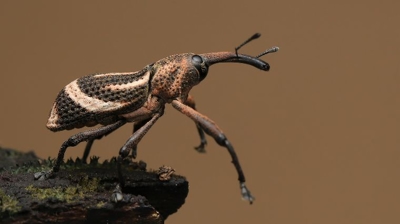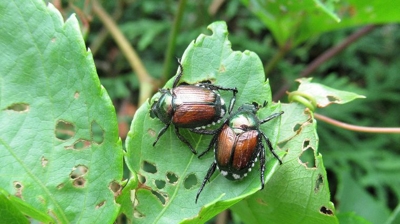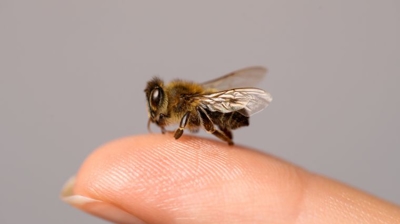
Honey Bees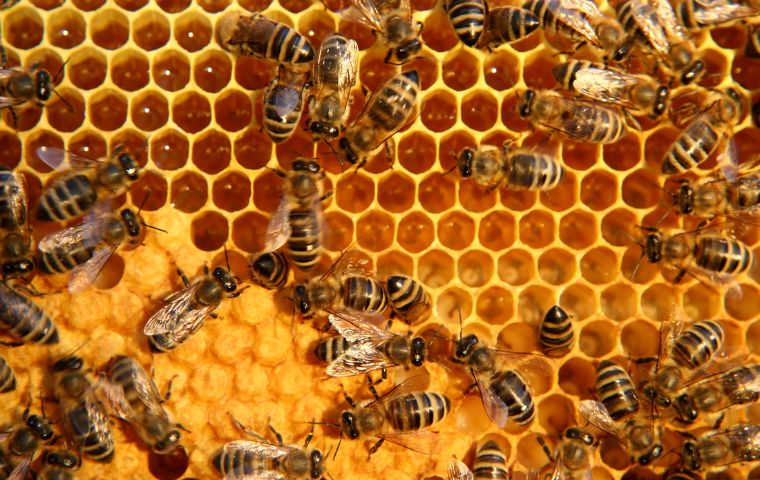
What Are Honey Bees?
Honey bees, scientifically known as Apis mellifera, are a species of bee widely recognized for their role in pollination and honey production. They are essential to both the environment and agriculture due to their ability to pollinate a wide variety of plants. Honey bees are social creatures that live in large, organized colonies or hives, typically consisting of a single queen, worker bees, and male bees called drones.
The queen is the reproductive female responsible for laying eggs that will hatch into new workers, drones, or more queens. Worker bees, which are sterile females, perform a variety of tasks, including foraging for nectar and pollen, caring for the queen’s offspring, defending the hive, and maintaining the hive's structure. Drones exist solely to mate with a queen.
Honey bees are famous for producing honey, a sweet substance made by digesting nectar, which they store in the hive to feed the colony during times when flowers are not blooming. They are also known for their ability to communicate with one another through a "waggle dance," which indicates the direction and distance to nectar sources.
In addition to honey production, honey bees play a crucial role in pollinating many crops, such as fruits, vegetables, and nuts, making them vital to global food production. Their decline due to factors like habitat loss, pesticide use, climate change, and disease has raised significant concerns about biodiversity and agricultural sustainability.
Are Honey Bees Dangerous?
While honey bees are generally non-aggressive and play a crucial role in the environment, they can be considered dangerous in certain situations, especially if provoked or if someone has an allergic reaction to their sting. Here are several ways honey bees might be considered dangerous:
- Sting and Allergic Reactions: Honey bees have a stinger that they use as a defense mechanism when they feel threatened. When a honey bee stings, it injects venom into the skin, which can cause pain, swelling, and redness. For most people, this is a mild reaction. However, for individuals who are allergic to bee venom, a sting can trigger a severe allergic reaction known as anaphylaxis, which can be life-threatening if not treated promptly. Symptoms of anaphylaxis can include difficulty breathing, swelling of the throat, dizziness, and a drop in blood pressure.
- Aggressive Behavior: Although honey bees are not naturally aggressive, they can become defensive and territorial if their hive or queen is disturbed. In rare cases, if a person or animal comes too close to the hive, especially during the warmer months when bees are more active, a swarm of bees might attack in defense of their home. This could lead to multiple stings, which may cause pain and in some cases, a severe allergic reaction.
- Swarming: Honey bees often swarm when a new queen is born, and a portion of the colony leaves the hive to establish a new colony. During this time, the bees are more agitated and can sting if they feel threatened. Swarms of bees can sometimes become a nuisance or pose a danger to humans, especially if they are near populated areas.
- Multiple Stings: While a single sting is typically not dangerous for most people, being stung multiple times, especially in quick succession, can lead to more serious health issues. The venom from several stings can overwhelm the body, leading to a condition known as systemic toxicity, which can cause symptoms like nausea, dizziness, headaches, or even kidney failure in extreme cases.
- Interaction with Livestock or Pets: Honey bee stings can be particularly dangerous for pets or livestock, as they may not have the ability to recognize or avoid bee stings. Multiple stings can be especially harmful to smaller animals or those with allergic reactions.
- Nesting in High-Traffic Areas: Honey bees sometimes establish hives in inconvenient or dangerous locations, such as in the walls of homes, under the eaves, or in attics. If humans inadvertently disturb the hive while in these areas, the bees might become aggressive in their defense, potentially leading to stings or a dangerous situation.
While honey bees do pose some risks, these instances are typically avoidable by respecting the bees' space, being cautious around hives, and taking appropriate actions if an allergy to bee venom is known. In general, honey bees are more beneficial than dangerous and are crucial for pollination and biodiversity.
Honey Bee Appearance
Honey bees are small, fuzzy insects with distinct physical features that help identify them. Here’s a detailed description of what they look like:
- Size: Honey bees are typically about 1/2 inch to 5/8 inch (12-15 mm) in length. They are slightly smaller than a bumblebee but larger than many other types of bees.
- Color: Honey bees have a golden-yellow body with black stripes running horizontally across their abdomen. The body has a slightly hairy appearance, which helps them collect pollen from flowers. The color pattern can vary slightly depending on the subspecies, but the classic yellow and black stripes are the most recognizable feature.
- Head: The head houses their compound eyes, which allow them to see a wide range of colors (including ultraviolet light) and detect movement. The head also contains antennas used for sensing and communication, and mandiblesfor chewing and manipulating objects.
- Thorax: The thorax is the middle segment of their body and is where their six legs and two pairs of wings are attached. The front wings are larger than the hind wings, and when at rest, the wings are usually folded over the back. The thorax also has muscle attachment points for flight.
- Abdomen: The abdomen is where the bee’s reproductive and digestive organs are located. The abdomen is also where the stinger is found in female worker and queen bees. It’s covered with tiny hairs that help in the collection of pollen.
- Wings: Honey bees have two pairs of wings: forewings and hindwings. The forewings are larger, and when at rest, the wings are folded over the back in a characteristic position. The wings are transparent and delicate, with visible veins running through them.
- Antennae: Honey bees have two antennae that are located on the head. These antennae are important for detecting smells and vibrations, playing a crucial role in communication with other bees and finding nectar sources.
- Stinger: Female honey bees (workers and queens) have a barbed stinger at the end of their abdomen. The stinger is used for defense. Worker bees can sting once, after which they die because the stinger becomes lodged in the skin of their target. The queen bee's stinger is smooth and can be used multiple times, primarily for colony defense and reproduction.
- Fuzz: Honey bees have fine, fuzzy hairs on their bodies, especially on the thorax and abdomen. These hairs help collect pollen as they move from flower to flower.
In terms of shape, honey bees have a fairly round, compact body, which allows them to fly efficiently. Their well-developed wings and body shape make them highly effective at navigating between flowers for pollination, which is one of their most important roles in nature.
Learn more: What Do Honey Bees Look Like?
Learn more: Honey Bees vs Bumblebees
Honey Bee Habitat
Honey bees can be found in a variety of locations, both in the wild and in human-managed environments. Here are some common places where honey bees are typically found:
- Flowering Gardens and Fields: Honey bees are highly attracted to areas with abundant flowers, especially those that produce nectar and pollen. They can often be found in gardens, meadows, orchards, and fields where there is a variety of blooming plants. These locations provide honey bees with the resources they need for pollination and nectar collection. Some of their favorite plants include sunflowers, clover, lavender, and fruit trees.
- Beekeeping Hives: In managed environments, honey bees are commonly found in beekeeping hives. These hives are designed to house and protect bee colonies and are often placed in fields or orchards for commercial pollination purposes. Beekeepers maintain the hives to harvest honey and beeswax, and they may also use the hives for breeding bees or for pollination services.
- Wild Habitats: In nature, honey bees build their hives in cavities in trees, hollow logs, or rock crevices. They may also settle in man-made structures like attics, wall voids, or eaves of buildings if these areas provide shelter and protection from the elements. Wild honey bee colonies tend to prefer areas that offer some degree of isolation and protection.
- Agricultural Fields and Orchards: Honey bees are commonly used for commercial pollination in agricultural settings. They are often brought to orchards, almond groves, cranberry bogs, or other crop fields to pollinate fruit, vegetables, nuts, and other crops. Honey bees are highly effective at increasing crop yields through their pollination efforts.
- Woodlands and Forest Edges: In more natural environments, honey bees can be found in wooded areas, particularly in the open edges of forests where flowers grow in abundance. These areas provide bees with a variety of plants for foraging, as well as suitable places for nesting in hollow trees or other natural cavities.
- Urban and Suburban Areas: In recent years, honey bees have increasingly adapted to urban and suburban environments. Urban gardens, parks, and green spaces provide food sources for honey bees, and beekeeping has become popular in cities. Many urban areas have beekeeping initiatives, community gardens, and even rooftop hives where honey bees thrive.
- Public Parks and Nature Reserves: Honey bees can be found in nature reserves, botanical gardens, and public parks, especially during warmer months when flowers are blooming. These areas offer a combination of open spaces and flowering plants that attract honey bees for foraging.
- On Flowers in Bloom: Honey bees are constantly on the move during the spring, summer, and fall, visiting flowers to gather nectar and pollen. You can often find them actively flying around garden plants, wildflowers, and crops. Their buzzing sound is a common indicator that bees are in the vicinity of a flowering plant.
Honey bees are highly adaptable creatures, and their ability to thrive in various environments makes them crucial for pollination across many ecosystems. Whether in wild habitats, agricultural fields, or human-managed hives, honey bees are found wherever they can access the resources they need to survive and thrive.
Honey Bee Diet
Honey bees primarily consume nectar and pollen, both of which they collect from flowers, but their diet and food usage are more nuanced depending on the bee’s role in the colony and the time of year.
- Nectar: Nectar is a sugary liquid produced by flowers to attract pollinators. Worker bees collect it using their proboscis (a straw-like tongue) and store it in their honey stomach, a separate organ from their digestive stomach. Once back at the hive, they pass the nectar to house bees who process it and deposit it into honeycomb cells. Through evaporation and enzyme activity, nectar is converted into honey, which serves as the colony's primary carbohydrate source—providing the energy needed for flight, thermoregulation, foraging, and other metabolic activities.
- Pollen: Pollen is the bees’ protein source and contains essential amino acids, lipids (fats), vitamins, and minerals. It is vital for brood (larvae) development. Nurse bees consume pollen and use it to produce royal jelly, a protein-rich secretion fed to all larvae in their early stages and exclusively to queens throughout their development.
- Honey: Honey is not only a food source but also a critical stored energy reserve, especially during winter or periods of dearth (scarcity of flowering plants). Bees consume honey when foraging isn't possible, particularly in cold months.
- Bee Bread: Pollen is often mixed with nectar and enzymes and stored in cells, where it ferments slightly to become bee bread. This preserved food source is easier to digest and contains beneficial microbes that aid in larval nutrition and adult bee health.
- Royal Jelly: Produced by nurse bees, royal jelly is a highly nutritious secretion made from digested pollen and honey. It is fed to all larvae for the first few days and exclusively to those selected to become queens. It's rich in proteins, sugars, fatty acids, and vitamins.
- Sugar Syrup or Fondant (in Managed Hives): In managed beekeeping, beekeepers often supplement bees' diet with sugar syrup (a mixture of sugar and water) or fondant (solid sugar paste) during times of scarcity, such as early spring or late fall, especially if the bees' honey stores are insufficient. This is a temporary energy source, not a replacement for a diverse, natural diet.
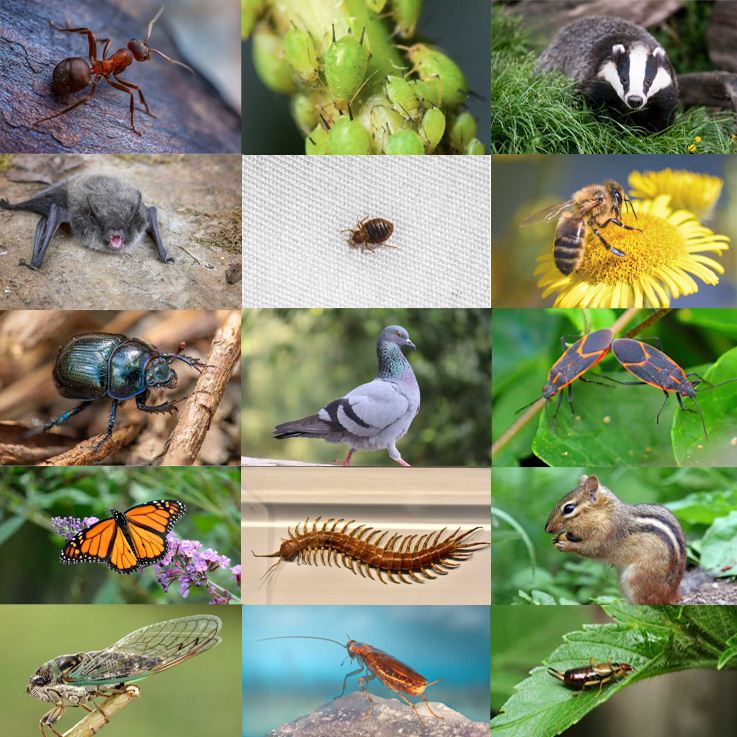
Honey Bee Life Cycle
The life cycle of honey bees (Apis mellifera) is a highly organized and structured process that varies slightly depending on the caste of the bee—queen, worker, or drone—but all begin life as an egg laid by the queen. The complete metamorphosis involves four main stages: egg, larva, pupa, and adult. The total time from egg to adult ranges from 16 to 24 days, depending on the caste.
Egg Stage (Day 1–3):
Every honey bee begins life as a fertilized or unfertilized egg laid by the queen in a wax cell. Fertilized eggs become workers (females) or queens, depending on diet. Unfertilized eggs become drones (males). The egg is a tiny, white, elongated oval that stands upright in the cell on the first day and gradually lies flat by the third day.
Larval Stage (Day 4–9)
On the fourth day, the egg hatches into a larva, a legless, grub-like creature. Larvae are fed by nurse bees. All larvae receive royal jelly for the first 2–3 days. After that, worker and drone larvae are fed a mixture of pollen and nectar or diluted honey (often called worker jelly). Queen larvae, however, continue to receive an exclusive diet of royal jelly throughout their development. Larvae grow rapidly, shedding their skin several times. By around Day 9, the larvae are fully grown and the cell is capped with wax by the workers.
Pupal Stage (Day 10–21, depending on caste)
Inside the capped cell, the larva spins a cocoon and begins the pupal stage, where it undergoes metamorphosis. During this period, the bee develops adult structures: legs, wings, eyes, and exoskeleton. Timeline to emergence (approximate): Queen: Day 16, Worker: Day 21, Drone: Day 24
Adult Stage
After emerging from the cell, the bee enters adulthood, and its role is determined by its caste:
- Queen Bee: Develops in 16 days. Only one queen exists per hive (normally). Her primary role is to lay eggs—up to 2,000 per day in peak season. She may live for 2 to 5 years. She emits pheromones that maintain colony cohesion and suppress other queens.
- Worker Bee (Female): Develops in 21 days. The majority of the hive population. Performs various roles depending on age: Days 1–3: Cleans cells. Days 4–10: Feeds larvae (nurse bees). Days 11–20: Produces wax, builds comb, tends queen, guards hive. Day 21 onward: Forages for nectar, pollen, water, and propolis. Lifespan: 5–6 weeks in summer, several months in winter (non-foraging season).
- Drone Bee (Male): Develops in 24 days. Purpose is to mate with virgin queens during nuptial flights. Drones do not forage, have no stinger, and are usually expelled from the hive before winter. Lifespan: Up to 8 weeks, often dying immediately after mating.

Hear From Our Happy Customers
-
"Fantastic & Patient"
Jarvis was fantastic and patient. He answered my questions with an in-depth explanation and addressed all of my areas of concern. Would love for him to be my assigned tech going forward. Well done!
- Yonnette M. -
"Great Communication"
Tech was on time, communication was great, and he accommodated my needs.
- Alonzo W. -
"Wonderful Service"
Wonderful service. Jarvis is great. Took care of everything I needed. Thank you!
- Henry P. -
"Exceeds Expectations"
I can’t say enough positive things about this company... The tech that came out, Jarvis went above and beyond my expectations. Thank you guys, I will continue using your services.
- Jake M. -
"Professional & Considerate"
I’m pleased with Miche services. Jarvis came today. Professional and considerate. Thank you!
- Judy B. -
"Very Knowledgeable"
The tech that arrived was courteous, professional, and very knowledgeable. He was Great.
- Uerial I.

